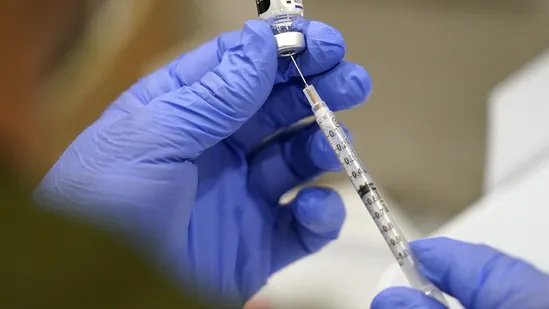The emergence of a new mutant of SARS CoV-2 virus, B.1.1.7, in the UK with suspected increased propensity for transmission by 70% has spurred increased genomic surveillance for Covid-19. Genomic surveillance enables rapid investigation of the evolution and transmission of the virus at the local, regional and international levels. We know that the viruses mutate regularly because the viral replication process, particularly in the RNA viruses, is error prone. Therefore, the RNA viruses such as SARS- CoV-2 accumulate mutations, and currently, it is estimated that it has already undergone more than 4000 mutations. There are apprehensions about the possible impact of these mutations on transmissibility, accuracy of diagnostic tests, pathogenicity, disease severity, immunogenicity (ability to elicit immune response), drug therapy and vaccine development. It is for this reason that the rapid viral sequencing of the SARS CoV-2 strains is vital during the current pandemic.
The genomics epidemiology has progressed tremendously in the last two decades. The gene sequencing of the SARS CoV-2 could be done as early as the start of January 2020, as compared to the past, when virus genome sequences took a long time to analyze. We can now glean insights into evolutionary, genetic and epidemiological aspects of SARS CoV-2 with much greater detail following the recovery of a new strain because of our increased ability to sequence virus genomes.
The benefits of genomic surveillance include the following:
1.It can provide insight into virus biology, transmission and evolution of outbreaks. For example, it could trace the transmission of Avian Influenza Virus -AIV H7/N9 spread across China. Tracking outbreaks is vital in special situations such as hospitals, care homes, schools, restaurants and bars where genomic surveillance can provide evidence to refute or support linked transmission arising out of the premises.
2. The technique can identify molecular markers with the viral phenotypes and help predict the pathogenicity, antigenicity, transmissibility and drug sensitivity of the mutant strains.
3. Gene sequence from the patient samples facilitates the development of rapid molecular diagnostics.
4. Linking the viral genome data with the clinical information of the patient can help decipher the implications of the mutations. For instance, D614, which was the initial emergent strain, caused high viral load among patients, albeit with low disease severity. It’s mutation to D614G changed it to an infection with higher transmissibility and infection with a lower viral load. It soon became the dominant strain all over the world. In case of H7N9 AIV, mutations conferred high pathogenicity to humans and birds, posing serious threat to public health and food supply.
5. Genomics surveillance can also identify the transmission of primarily animal or zoonotic viral infections among human beings with the roots of transmission. Genomic surveillance helped understand the evolutionary origin of the human H7N9 virus in 2013 in China when it confirmed that chickens were the main source of the new virus. The genomic epidemiology can also guide interventions locally and evaluate the outcome of these interventions. We know about the closure of live poultry markets and slaughter of millions of domestic fowl potentially infected with the highly pathogenic Avian influenza virus strain H5N1 in India as well as the recent culling of 17 million Covid-afflicted minks in Denmark following outbreaks in over 200 mink farms. Minks, after infection with Covid, were spreading a mutated form of the virus back to humans.
6. Many current influenza surveillance programs involve genomic sequence-based assessment in order to estimate the emergence risk and to evaluate the effectiveness of vaccines. Similarly, evolutionary analysis of the influenza virus genome allows prediction of the antigenic evolution of the virus and informs about influenza vaccine strain selection.
7. The spread of the virus infections across long distances can be identified by genomic sequences as was the case of the spread of the highly pathogenic Asian H5 subtype of AIV which travelled to Europe and America in 2014 with long-distance bird migration.
8. We are also able to measure the effects of the viral mutations on growth in cell culture. This is vital for drug and vaccine development and to study resistance to therapies.
Therefore, the correlation of virus genome with data on human demography, human genetics, international travel, viral infections among animals, wild bird movements and poultry trade has the potential to improve our understanding of the risk of viral infections among human beings as well as the animal kingdom.
Recognising the need to study viral transmission and evolution using whole gene sequencing, there have been global efforts to invest efforts in this field, for example, SARS- CoV-2 Sequencing for Public Health Emergency Response, Epidemiology and Surveillance (SPHERE) in the United States and the Covid-19 Genomics UK (COG – UK) in the United Kingdom, which has sequenced more than 1,35,000 viral samples (nearly half of samples from around the world). In India, a genomic surveillance consortium (INSA- COG) has been formed for laboratory and epidemiological surveillance of SARS CoV-2 strains in India and tasked to follow the new coronavirus detected in recent returnees from the UK.
The Indian government has divided the country into six regions to launch a massive molecular hunt for the UK mutant variant in patients who test positive for Covid-19 and has designated 10 regional genome sequencing laboratories spread across the country to cater to the states in their neighbourhood. 5% of all the positive samples from these labs will be sent for genome sequencing and the data will be sent to the National Centre for Disease Control (NCDC), Delhi for compilation and analysis. In case the mutated virus is detected, it will be isolated and cultured in notified viral repositories. This prospective surveillance will help in the validation of diagnostic assays, testing of vaccines under development as well as link molecular surveillance with clinical specimens and epidemiological surveillance for relevant clinical correlation for this mutation or any other variant mutation detected in the samples. The genome sequencing therefore allows us to establish sentinel surveillance to detect the genomic variants with public health implications early and to pre-empt the variants which have an increased pathogenicity or ability to transmit thus leading to the super spreader events.
The writer is chief of AIIMS Trauma Centre.









